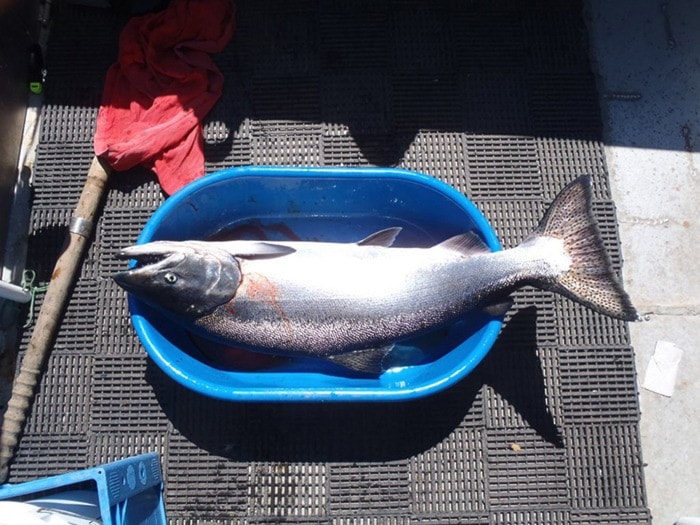Elaine and I were introduced to drift fishing in 1972 by the late Rex Field while fishing out of Bates Beach Resort. Rex is credited with inventing the Buzz Bomb and Zzinger, along with his son Doug. It was a simple and effective way to enjoy family fishing with a high degree of success for coho and chinook salmon plus many types of bottomfish. Our children all became efficient drift fishers with Buzz Bombs and Zzingers. Indeed many of our grandchildren followed in the steps of their parents as they too became keen drift fishers.
Over the past few years drift fishing has been making a come back with the increased numbers of coho and chinook in local waters. Also the large schools of bait fish have made fishing for salmon with drift lures an attractive option to trolling. As with all types of progress in specialized fields, the lures used in drift fishing have advanced with the development of small jigs fashioned with a modifies “S” shape and made with an attached hook as opposed to the free moving hooks of the Buzz Bomb and Zzinger design. These lures are Vancouver Island-inspired and produced. The Zelda by Buzz Bombs, The Macdeep by Mac Enterprises and the L’il Nib by Nobby Lures out of Nanaimo are examples of the growing effectiveness of drift lures and changes in design. They are all available in tackle shops throughout the Island and vary in prices from around $6 to $10, depending on the type and size you chose to purchase.
One of the major reasons why drift fishing or jigging is so popular with families is that everybody old enough to hold a fishing rod and jig it up and down can fish. The fishing outfits can be reasonable good spinning outfit or bait casting set-ups. For children I recommend a spinning outfit because they can hold on to the rod better as they play a large fish be it a dogfish, lingcod or salmon.
The technique of simply dropping the lure over the side and letting it sink until it hits the bottom, then quickly reeling up about three or four feet, then lifting it up letting it drop is easily mastered. When they get a bite they learn to set the hook and how to play their catch. The significant point about this type of marine fishing is that everybody is holding a rod and actually fishing. I suggest this is important if you want children ad others to enjoy their saltwater angling beyond watching a line on a downrigger, waiting for a strike. I clearly recall a large chinook that Elaine hooked and landed on a small spinning outfit that she was using instead of our usual level wind reels. She was fishing in about 35ft. of water over a somewhat rocky bottom when she hooked her fish. Her first response was “ Damn, I have hooked the Bottom!”. Then her line started to peel out as the hooked fish started a long sustained run. I followed the disappearing line on her reel and about half and hour later we netted a prime 34-pound Vancouver Island chinook. It was one of Elaine’s best ever salmon and a one of the high events of her long recreational fishing career. As illustrated by the photographs with the column, you never know what will take your drift lure when you lower it into the shallow waters of our local Area 14 fishing hotspots. Tackle manufactures design and produce drift lures that are species specific as in fishing for sockeye and other species and it is part of the excitement of learning to be successful with this effective tackle that makes drift fishing a season long type of angling.
In Area 14 there are many drift fishing sites that will produce good fishing. The waters off Salmon Point and out in front of the Oyster River and Black Creek estuary hold coho, chinook, pinks plus a variety of Rockfish and flatfish as in sole and flounders. Fish in depths varying from 60 to 100 feet depending where the fish are moving. Using these patterns and fishing hotspots down to Flora Rocks off Hornby Island will produce a wide variety of targeted fish. Watch the birds, your depth sounder and visible schools of fish for active fishing locations.
